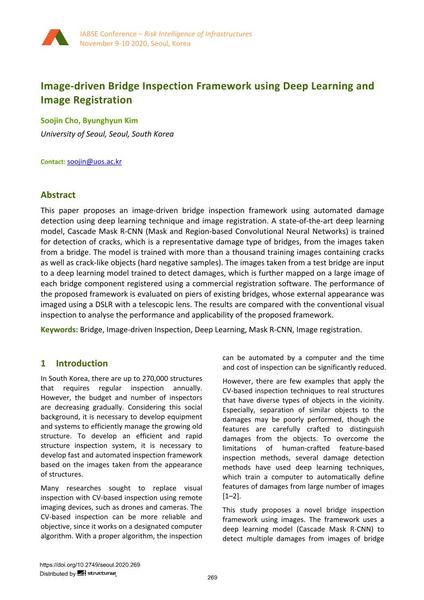Image-driven Bridge Inspection Framework using Deep Learning and Image Registration

|
|
|||||||||||
Bibliografische Angaben
| Autor(en): |
Soojin Cho
(University of Seoul, Seoul, South Korea)
Byunghyun Kim (University of Seoul, Seoul, South Korea) |
||||
|---|---|---|---|---|---|
| Medium: | Tagungsbeitrag | ||||
| Sprache(n): | Englisch | ||||
| Tagung: | IABSE Conference: Risk Intelligence of Infrastructures, Seoul, South Korea, 9-10 November 2020 | ||||
| Veröffentlicht in: | IABSE Conference Seoul 2020 | ||||
|
|||||
| Seite(n): | 269-272 | ||||
| Anzahl der Seiten (im PDF): | 4 | ||||
| DOI: | 10.2749/seoul.2020.269 | ||||
| Abstrakt: |
This paper proposes an image-driven bridge inspection framework using automated damage detection using deep learning technique and image registration. A state-of-the-art deep learning model, Cascade Mask R-CNN (Mask and Region-based Convolutional Neural Networks) is trained for detection of cracks, which is a representative damage type of bridges, from the images taken from a bridge. The model is trained with more than a thousand training images containing cracks as well as crack-like objects (hard negative samples). The images taken from a test bridge are input to a deep learning model trained to detect damages, which is further mapped on a large image of each bridge component registered using a commercial registration software. The performance of the proposed framework is evaluated on piers of existing bridges, whose external appearance was imaged using a DSLR with a telescopic lens. The results are compared with the conventional visual inspection to analyse the performance and applicability of the proposed framework. |
||||
| Stichwörter: |
Brücke
|
||||
